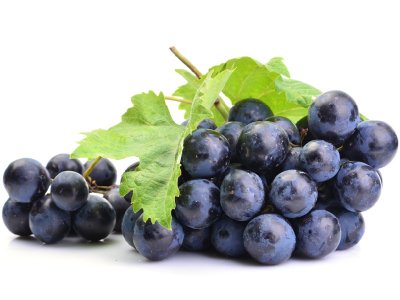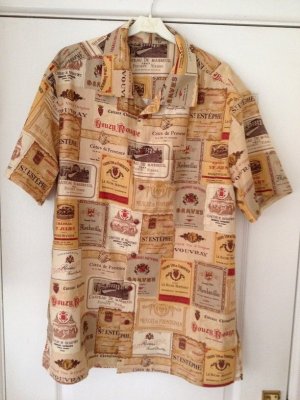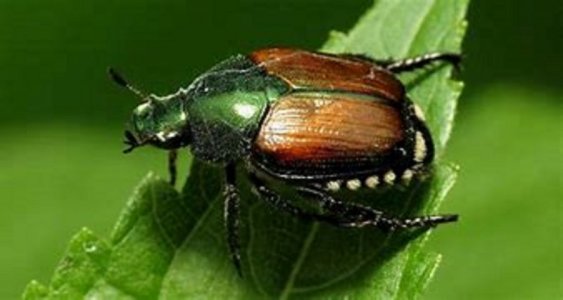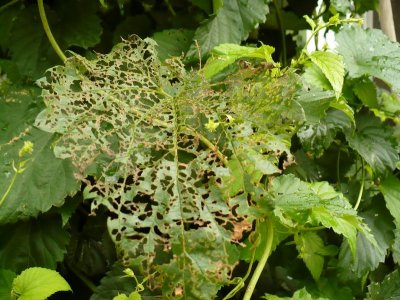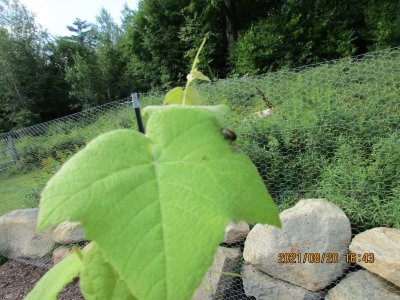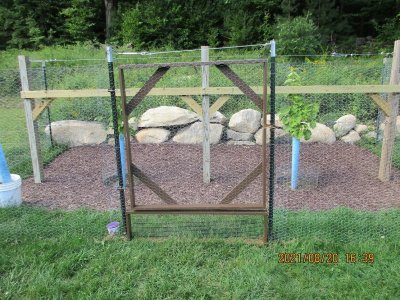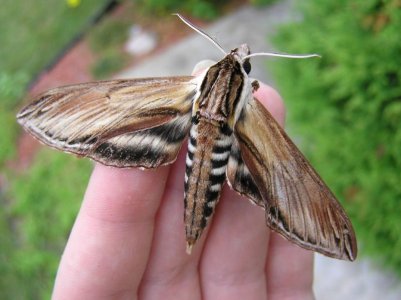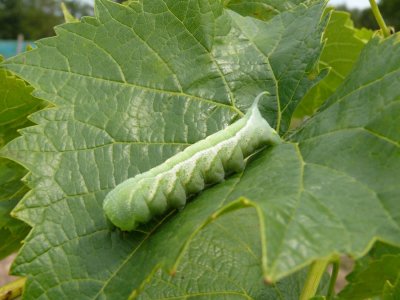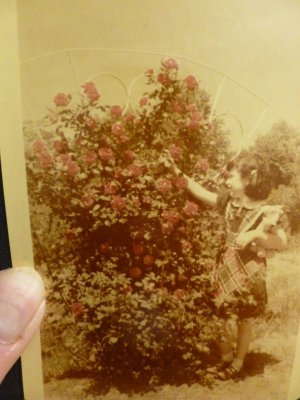Attack!
The Invasion of the Voracious Leaf-Eating Beetles from New Jersey.
******** Suspense ********** Chills ********** Terror **********
Hehe! No, it probably wouldn’t make much of a horror movie, would it?
Early August 2021. It was inevitable that insects would eventually become an issue in the vineyard, but frankly I didn’t see this one coming. I’ve been more concerned about our many hornets eventually damaging the ripe fruit.
I admit that Japanese beetles are attractive little monsters (as much as a beetle can be attractive) . About a half-inch long, they have a dark, metallic green body with shiny, bronze colored wing covers. The internet says they were first identified in the US in 1916 in Riverton, NJ where they were most likely imported in the soil of nursery plants. Today they are well established in all states east of the Mississippi River except Florida and Louisiana.
View attachment 204532
The adult beetles eat the leaves of plants, leaving only a skeleton of leaf veins. The larvae (grubs) eat the roots, mostly of grass. At the moment I’m not seeing them in large numbers but if they become well established in the yard they could become a serious problem.
View attachment 204533
What to do?
I’m reluctant to use a chemical insecticide that might harm other, beneficial insects. It seems that a common approach is to just pick the adults off the leaves by hand and drown them.
After putting a little soapy water into an empty plastic food container, I approach my prey . . .
As I reach for the first one, it flies away. Um, okay. That’s
not what happened in the YouTube video .
I try again. This time it’s a group of four beetles blithely enjoying an afternoon snack. I sneak up on them holding the tub of soapy water under the leaf. I swat down on the leaf and one goes into the water while the others fly off.
After a little more research I learn that the time to “pick” beetles in is the early morning when they’re sluggish. I’m not a late sleeper, but this doesn’t strike me as a really great way to start my day.
Eventually, I find that by grabbing them quickly I can get about half and the ones that get away don’t seem to return very quickly. Their season lasts for six to eight weeks and I think I’ll be able to keep the damage to the leaves to an acceptable level.
This works well enough for now, but as the vines get larger it could get pretty labor intensive. I’ll spend some time this winter looking for better control methods.
View attachment 204534
Some wisdom from the vineyard.
In days long past, growing crops was, for many, an essential part of life. A poor harvest meant a hungry winter for the family. Insects could be literally life threatening. For most people in the developed world today, home gardening is merely a satisfying diversion, a self-imposed challenge.
Yes, I’m thoroughly enjoying our little foray into the world of viticulture (grape growing) and look forward to many rewarding grape harvests, but how high does it actually rank on my list of “important stuff”? Well, to be honest, not high at all.
That list centers around my service to the Lord, the well-being of my family, my friends, my neighbors, my fellow man.
At any time, the vineyard project could meet with an unfortunate end but the experience, this small interaction with God’s creation, will endure.
Matthew 6:19-21 Do not store up for yourselves treasures on earth, where moth and rust destroy, and where thieves break in and steal. But store up for yourselves treasures in heaven, where neither moth nor rust destroys, and where thieves do not break in or steal. For where your treasure is, there your heart will be also


